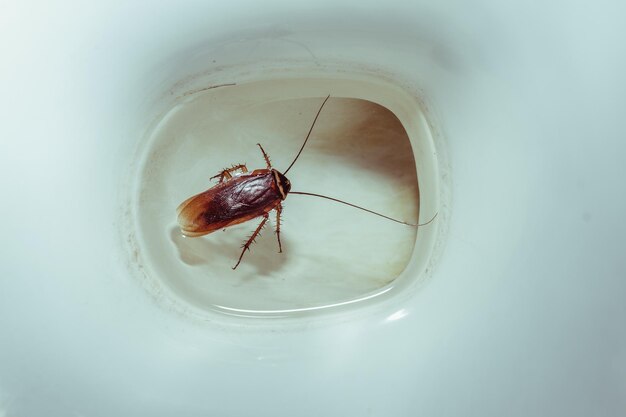Can Roaches Really Survive in Your Refrigerator? Here's What You Need to Know
Have you ever opened your refrigerator door only to see a small, unwelcome visitor scurry away into the shadows? The thought of cockroaches invading such a critical corner of your kitchen is unsettling, to say the least. But it leaves many wondering: Can roaches actually survive in the refrigerator? This article delves into that question from multiple angles, aiming to provide you with a comprehensive understanding and practical tips for prevention.
Roach Resilience: What Makes Them So Tough?
Cockroaches are known for their incredible resilience, often surviving environments that would be inhospitable for other insects. So, what contributes to their hardiness?
- Adaptability: Roaches can adjust to various climates, often thriving in warm, humid environments. Yet, extreme cold can pose a significant challenge to their survival.
- Physical Characteristics: Equipped with durable exoskeletons, roaches can endure slight temperature fluctuations, allowing them to potentially creep into cooler spaces.
- Reproduction Rate: Roaches reproduce rapidly, making eradication difficult once they've established themselves.
Understanding these qualities helps explain why they might venture into your fridge despite the cold.
Inside the Fridge: Is it a Safe Haven or a Death Trap for Roaches?
Your refrigerator, designed to preserve perishable foods for human consumption, might not seem like an ideal habitat for roaches. However, there are a few factors to consider:
Temperature Tolerance
Cockroaches are ectotherms, meaning their body temperature is determined by their environment. Refrigerators usually maintain temperatures between 35°F and 40°F (1.6°C to 4.4°C). While this is lower than a roach might prefer, it's not immediately lethal. Roaches can potentially survive short periods within these limits, especially near warmer spots within the appliance, such as the motor or compressor.
Availability of Food
Even within a refrigerator, food particles or spills could provide enough sustenance for these pests. Minuscule crumbs, expired food containers, or neglected spills can attract and feed a small number of roaches.
Shelter and Safety
Small, overlooked crevices in and around the seals, behind vegetable drawers, or even at the base of the fridge can offer temporary refuges for these unwanted guests. The combination of dark, confined spaces and some level of insulation makes these zones more appealing.
What Draws Roaches to the Fridge?
Beyond seeking a less comfortable climate, why would cockroaches venture into such a cold environment?
Food Sources Nearby
The kitchen offers more than just the refrigerator as a food source. Spilled food, crumbs, and trash bins can draw in cockroaches, leading them to explore every nook and cranny nearby, including your fridge.
Warmth and Moisture
Parts of the refrigerator, like the motor or vent systems, generate warmth and may provide moisture. These create a more hospitable environment than the frigid interior, making them appealing hiding spots.
Opportunities for Nesting
Cockroaches seek hidden, dark, and moist places for nesting. A refrigerator's bottom panel, its motor cavity, or any secluded area could serve as a breeding ground if conditions outside the fridge are favorable.
Practical Steps to Keep Roaches out of Your Refrigerator
Eliminating and preventing a cockroach infestation in and around your refrigerator involves a systematic approach. Here are some actionable steps:
- Seal Entry Points: Ensure door seals and gaskets are intact and functioning properly to limit access.
- Maintain Cleanliness: Regularly clean shelves, trays, and drawers. Promptly address spills and crumbs.
- Organize and Manage Food: Throw away expired food and organize items to keep track of potential problem areas.
- Inspect Nearby Areas: Clean beneath and behind your fridge, addressing any dirt or crumbs that might serve as an attraction.
- Monitor Other Food Sources: Properly seal trash bags, clean out pet dishes, and keep pantry items secure to minimize external feeding opportunities.
Considerations When Dealing with an Infestation
If you suspect a more significant infestation, it's crucial to address it quickly and thoroughly. While preventive measures are important, sometimes professional intervention is necessary when facing a larger issue.
DIY Solutions
- Natural Deterrents: Use substances such as boric acid or diatomaceous earth around entry points and possible hiding spots.
- Traps and Baits: Strategically place roach baits and adhesive traps in the kitchen and near suspected hiding spots.
Professional Assistance
If DIY measures fall short, seeking professional pest control services may be essential. Experts can target the infestation more effectively and provide comprehensive solutions tailored to your situation.
Tips to Maintain a Roach-Free Kitchen Long-Term
- Routine Inspections: Make a habit of checking your refrigerator and surrounding areas for any signs of pests.
- Pest-Proofing: Evaluate potential entry points and keep all openings sealed as much as possible.
- Consistent Hygiene Practices: Maintain cleanliness in the kitchen, focusing on food storage and disposal systems.
Key Takeaways: How to Protect Your Fridge from Roaches
Here's a quick visual summary of steps to keep your refrigerator roach-free:
- 🔍 Regular Inspections: Frequently check fridge seals and clean both inside and outside.
- 🧹 Cleanliness is Key: Promptly tackle spills and crumbs to erase food sources.
- 🔧 Seal it Up: Make sure seals and entry points are tight to prevent easy access.
- 🚫 Limit Attractants: Minimize nearby food sources that could lure roaches in.
Understanding the various factors that might allow cockroaches to survive and thrive in and around your refrigerator equips you to tackle the issue effectively. While the fridge may not be a roach's playground of choice, certain circumstances can lead them to explore this seemingly cold territory. By staying vigilant and proactive, you can significantly reduce the likelihood of finding these unwelcome guests in your kitchen!
